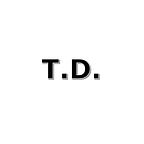Enterprise AI Architecture: Case in Point
Often as organizations scale the magic of AI begins to fade, not so much because it is ineffective, but because managing to generate faster, more efficient outcomes is much more difficult if you have an ecosystem spanning a multitude of platforms, geo-locations, regulatory requirements, customer demands, adherence to industry wide standards and so many other dynamic factors.
Scale introduces more and more noise into the pretty picture painted by that 6-week long POC, as many AI practitioners know only too well.
In the past year and a half Gen AI has generated so much hype; I’m personally aware of over a 100 POCs implemented internally and externally — from RAG to Fine Tuned to instruction trained models, from orchestrators, to platforms, from responsible AI to evaluation benchmarks, the evolution is fast and adoption is risky.
Yet among all these clients I know of only a single case where this has scaled to an Enterprise level.
Why is this conversion rate so poor?
To some extent this is still new and organizations want to make sure they understand the risks before making large investments to scale. Yet to some extent it is also because globally integrated processes with easy approvals are not in place. There is also the fear that putting specific processes in place for Gen AI, say, today might become sunk investments if a new disruption completely changes the market dynamics tomorrow.
This is a perennial question that haunts CFOs. Especially with respect to technology. Where is the next disruption and will it hurt more than help me at a firm level? How vulnerable is an Enterprise to AI disruptions that can turn a competitive edge on it’s face?
For a large GSIB I worked with, these questions led to the set of of an Enterprise Technology strategy. I worked with this team to standardize the Enterprise wide AI Architecture with the intent to ensure stability as well as enterprise agility, fool-proofing business as much as possible.
Context: My client is a Global-Systematically Important Bank for many years now. Systematically important implies that the internal functioning of the Bank is fundamental to the smooth functioning of not just the national economy, but also the global financial order.
To that extent the internal operations, systems, processes, technologies and collaboration at an enterprise level assume significance for the global economy at large. If systemic failings accumulate, internal failures can spill over and cause contagion, as we’ve witnessed in the aftermath of the sub-prime crisis.
Problem Statement: The mandate for this exercise was driven by the CTO office. client was the sheer volume and disparate approaches to documented architectures across different BUs, geographies, developed over the years, incomparable to each other, rendering it difficult, if not impossible, and expensive, for practitioners to implement.
As these architectures are largely incomparable, they are rendered unusable across teams, over time, and static in their ability to integrate across towers (ex. Data with AI, or Metadata with Fintech Knowledge Graph and Conversational AI).
Scope: His vision now is to organize, structure, and bring together ideas from many stakeholder groups and teams, subject matter experts and practitioners to set up a centralised Enterprise Architecture governed by the TOGAF and Archimate standards.
The sensitivity of this engagement is derived from the scale and extent of fragmented technologies, architectures, implementations, standards, and approaches, that prevail across the organization. Bringing it all together needed dedicated focus. Capgemini was asked to set up a think tank that would work with client representatives on 5 key technology towers identified by the client organization:
1. Data Management and Governance
2. Artificial Intelligence and Machine Learning
3. Cloud Migration and technology
4. Data Security
5. Customer 360
The solution was designed to set up a common space for 1000+ client stakeholders, Architects, Engineers, Strategists to collaborate, ideate, review and gain consensus on architectures that span the following :
1. Grade A (Overarching Business Architecture and Capability, usually a business capability like Enterprise AI & Analytics)
2. Grade B (Detailed System Architectures that aggregate to the Grade A, usually independent components of the Grade As ex AI Model Training or MLOps)
3. Grade C (Low Level System Architecture, 3rd Party Integration, Scenarios and Patterns that detail the Grade Cs and have a dependency relation with a related Grade C. Ex Model Monitoring as part of MLOps)
4. Blueprints (Detailed schematic of tools, technologies and workflows that implement the Grade Cs)
Some samples from the set of standardized architectures are:
- Enterprise Standard AI Lifecycle: The EA- AI architecture is a representation of AI Capability and structure at enterprise level comprising strategy, implementation, business, technology and application layer components from Archimate notations. Each component within this architecture has its own Grade B and Grade C architectures and documentation. Blueprints include benchmarked assessments and recommendations of tools, technologies, open-source utilities and integration capabilities at a granular level
2. Enterprise AI: MLOPS framework
MLOps process from EA-AI at Grade A above, for example, comprises the following components at the Grade B:
We used TOGAF and Archimate / BizzDesign standards and notations to develop a connected set of specifications for all Enterprise Data and AI. These are live architectures meant to evolve with new trends.
Our specifications also link to new market trends, use case development, extensive scenario and pattern designs for future implementers to utilize.
The benefit of addressing business architecture and processes in tandem with technical standards was also seen in a distinctive speed of approvals globally. This has helped our client stay extremely agile and adapt to sudden market disruptions at a global level.
#Architecture #EnterpriseArchitecture #AIatScale
